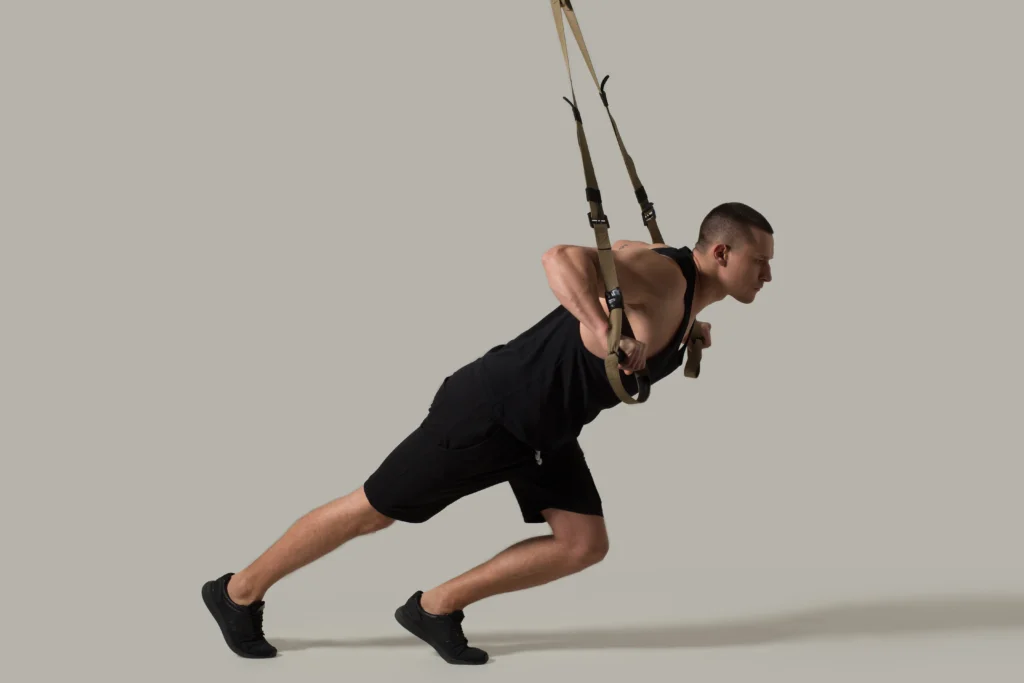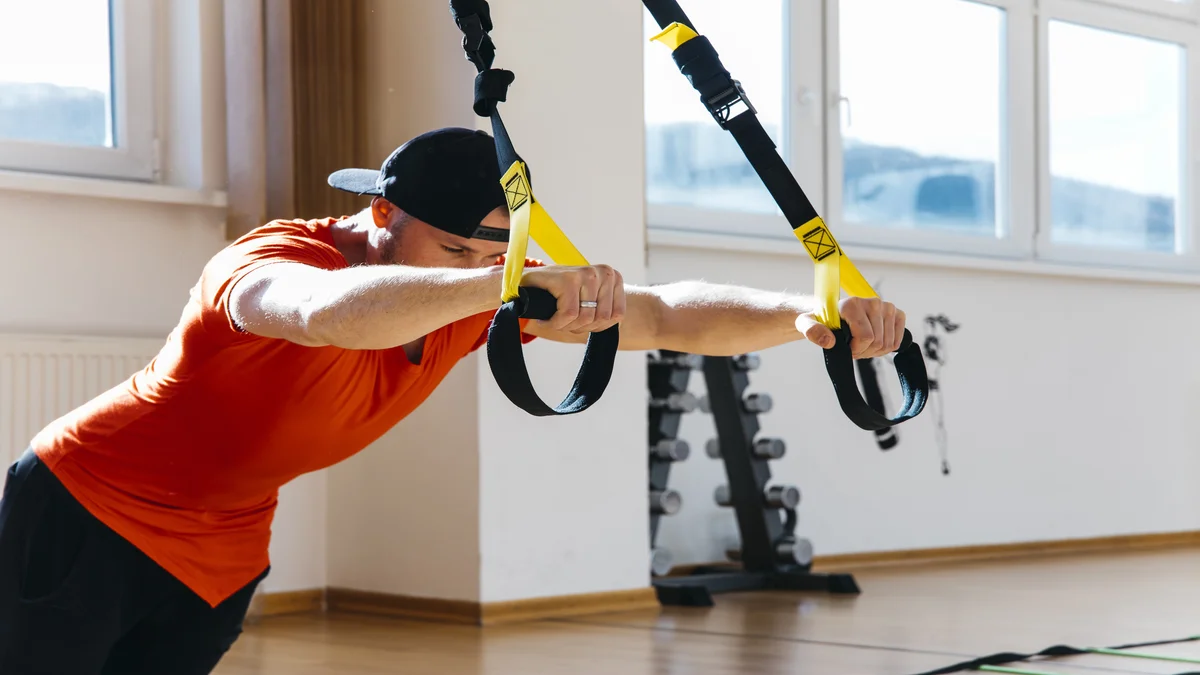Want to get really strong fast? This Iron Cross exercise is the perfect way to do it! With only a few weeks of effort, you’ll see amazing results.
The Iron Cross exercise is a difficult and advanced gymnastic strength exercise that requires upper body strength, stability, and control. The Iron Cross is a gymnastics workout that includes stretching both arms horizontally while suspended from rings or a bar. This maneuver requires a high level of shoulder and core stability as well as exceptional strength. It is critical to have a strong foundation in upper body strength and conditioning before attempting the Iron Cross. This guide will coach you through the procedures to properly and effectively prepare for and perform it.
Benefits of Iron Cross exercise

1. Develop Upper Body Strength:
Make sure you have a solid foundation in upper body strength before attempting the Iron Cross. Exercises that target the chest, shoulders, triceps, and back should be prioritized. In order to acquire the necessary muscle strength, include compound activities such as bench presses, shoulder presses, dips, and pull-ups in your training plan.
2. Perfect Your Form:
Understanding good form is essential for successfully completing it. Take note of your body’s position and alignment. Maintain a firm core while keeping your arms straight and parallel to the ground. To develop the requisite strength and stability, practice holding a straight-arm support stance on parallel bars or rings.
3. Strengthen Your Core:
A strong core is essential for maintaining stability during the workout. Incorporate exercises like planks, hollow body holds, and leg raises into your routine to strengthen your abdominal muscles and improve overall core stability.
4. Gradual Progression:
It is a difficult exercise, and performing it without adequate preparation can result in injury. Begin with progressions and work your way up in difficulty. Begin by building the specialized strength required for the Iron Cross with exercises such as ring support holds and ring dips.
5. Use Assistance:
If you’re just starting, consider using resistance bands or a training partner to assist you in achieving the correct position. This allows you to gradually decrease the level of assistance as you build strength and confidence.
6. Incorporate Skill Work:
In order to maintain the Iron Cross stance, include skill-specific workouts in your training. To improve your technique and increase your duration under stress, practice controlled swings, shoulder shrugs, and half Iron Cross grips.
7. Flexibility and Mobility:
Maintaining proper shoulder flexibility and mobility is crucial for the Iron Cross. Incorporate shoulder stretches and mobility exercises into your warm-up and cooldown routines to ensure your joints are prepared for the demands of the exercise.
8. Be Patient and Consistent:
It takes time and constant effort to master it. Be patient with your progress and remember to enjoy tiny victories along the road. Training consistency and a progressive approach will produce better outcomes and lower the chance of harm.
muscles work Iron Cross exercise
The Iron Cross exercise is a difficult gymnastic action that works a variety of muscles, primarily those in the upper body. The Iron Cross needs a great deal of strength, stability, and coordination. The following are the primary muscle groups engaged during the Iron Cross:
- Shoulders (Deltoids):
- When the arms are stretched horizontally, the shoulders are responsible for bearing the full person’s weight. The anterior (front) and lateral (side) deltoids are both very active.
- Triceps Brachii:
- The triceps, which are placed on the rear of the upper arm, are required for elbow joint straightening. They are extensively activated during the Iron Cross’s arm extension.
- Pectoralis Major (Chest):
- The chest muscles, specifically the pectoralis major, are engaged in horizontal arm abduction. The chest muscles are responsible for keeping the arms straight and parallel to the ground.
- Latissimus Dorsi (Lats):
- The lats, which are large muscles of the back, play a crucial role by assisting in the horizontal extension of the arms. These muscles provide the power needed to control and stabilize the movement.
- Rhomboids and Trapezius:
- The rhomboids and trapezius muscles of the upper back are recruited to assist in stabilizing the scapulae and maintaining appropriate shoulder posture.
- Core Muscles:
- The muscles of the core, including the rectus abdominis, obliques, and transverse abdominis, are activated to maintain a straight and stable position. Core strength is crucial for preventing excessive arching or bending during the exercise.
- Forearms and Grip Muscles:
- To keep a solid grasp on the gymnastic rings or bar, the forearm muscles, especially the flexors and extensors, are engaged.
- Wrist Flexors and Extensors:
- The muscles responsible for flexing and extending the wrists are activated, especially considering the wrist positioning required to perform it safely.
How to do Iron Cross exercise
1. Ensure Proper Warm-Up: Warm up your entire body, paying special attention to your shoulders, wrists, and core, before attempting it. Increase blood flow to the muscles by performing dynamic stretches, shoulder rotations, and modest aerobic activity.
2. Develop Upper Body Strength: As previously said, having a solid foundation in upper body strength is vital. In order to increase the necessary muscle strength, include exercises such as pull-ups, dips, push-ups, and shoulder presses in your training plan.
3. Master the Support Position: Begin by learning how to sustain yourself on the rings. Hang from the rings, arms fully extended and straight. This allows you to practice supporting your body weight on the rings.
4. Progress to Ring Dips: Once you are comfortable with the support position, progress to ring dips. Lower yourself into a deep dip while keeping your elbows close to your body. This exercise builds strength in the shoulders and triceps, which is crucial for it.
5. Work on Ring Swings: On the rings, practice swinging with control. This improves your general stability and control, preparing you for the Iron Cross’ swinging motion.
6. Start with Partial Iron Cross Holds: Start with half holds to ease your body into the stress of posture. As you acquire strength and confidence, hold the Iron Cross posture with your arms slightly bent, gradually increasing the angle.
7. Full Iron Cross Position: When you feel sufficiently strong and stable, attempt the full position. Hang from the rings with your arms fully extended, spreading them out horizontally. Your entire frame should form a straight line, with your legs parallel to the ground..
8. Focus on Control: Control should be emphasized throughout the movement. Avoid jerky or uncontrolled movements, as these can result in injury. Engage your core, tighten your body, and focus on maintaining a solid stance.
9. Gradual Progression: It is critical to go gently. Don’t rush through the procedure since trying the full Iron Cross without proper strength and control might result in injuries. Consistency is essential, and modest development will offer better long-term results.
10. Cool Down and Stretch: Cool down with mild stretching after completing it or any other strenuous workout. Maintain flexibility and prevent stiffness by focusing on the shoulders, wrists, and chest.
Safety Tips
- Listen to your system and avoid pushing yourself too hard too quickly.
- If you experience pain, especially in the shoulders or wrists, stop immediately and reassess your form and technique.
- Consider working with a coach or trainer experienced in gymnastics to provide guidance and feedback on your form.
Summary
The Iron Cross exercise is a stunning feat of strength and control that necessitates commitment and a deliberate approach to training. You can master this advanced gymnastic technique by focusing on growing upper body strength, honing form, and gradually progressing through skill-specific workouts. Always emphasize safety, listen to your body, and seek advice from a fitness professional if necessary. You may unleash the incredible strength and ability required to confidently perform it with focus and perseverance.





